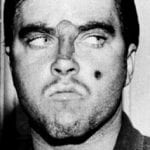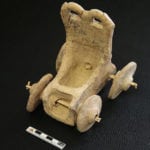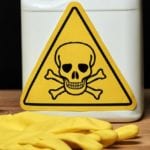 History
History  History
History  Weird Stuff
Weird Stuff 10 Everyday Products Surprisingly Made by Inmates
 Movies and TV
Movies and TV 10 Actors Dragged out of Retirement for One Key Role
 Creepy
Creepy 10 Lesser-Known Shapeshifter Legends from Around the World
 Animals
Animals 10 Amazing Animal Tales from the Ancient World
 Gaming
Gaming 10 Game Characters Everyone Hated Playing
 Books
Books 10 Famous Writers Who Were Hypocritical
 Humans
Humans 10 of the World’s Toughest Puzzles Solved in Record Time
 Mysteries
Mysteries 10 Scientific Mysteries We Don’t Fully Understand
 Weird Stuff
Weird Stuff 10 Celebrities Who Have Admitted to Alien Encounters
 History
History Ten Revealing Facts about Daily Domestic Life in the Old West
 Weird Stuff
Weird Stuff 10 Everyday Products Surprisingly Made by Inmates
 Movies and TV
Movies and TV 10 Actors Dragged out of Retirement for One Key Role
Who's Behind Listverse?

Jamie Frater
Head Editor
Jamie founded Listverse due to an insatiable desire to share fascinating, obscure, and bizarre facts. He has been a guest speaker on numerous national radio and television stations and is a five time published author.
More About Us Creepy
Creepy 10 Lesser-Known Shapeshifter Legends from Around the World
 Animals
Animals 10 Amazing Animal Tales from the Ancient World
 Gaming
Gaming 10 Game Characters Everyone Hated Playing
 Books
Books 10 Famous Writers Who Were Hypocritical
 Humans
Humans 10 of the World’s Toughest Puzzles Solved in Record Time
 Mysteries
Mysteries 10 Scientific Mysteries We Don’t Fully Understand
 Weird Stuff
Weird Stuff 10 Celebrities Who Have Admitted to Alien Encounters
10 Lab Mistakes That Became Everyday Items
They say that “necessity is the mother of invention.” Every day, a new scientific breakthrough occurs or a new product is invented to solve a problem or fulfill a need. Scientists and inventors often spend years researching and refining their discoveries.
However, it is surprising to find out that many common household items were created by mistake during this research process. Some inventors found that a lab mistake could be adapted to a new purpose straightaway. Others were discarded, only to be repurposed many years later.
Most households around the world wouldn’t be without these laboratory mishaps today.
10 Nonstick Cookware
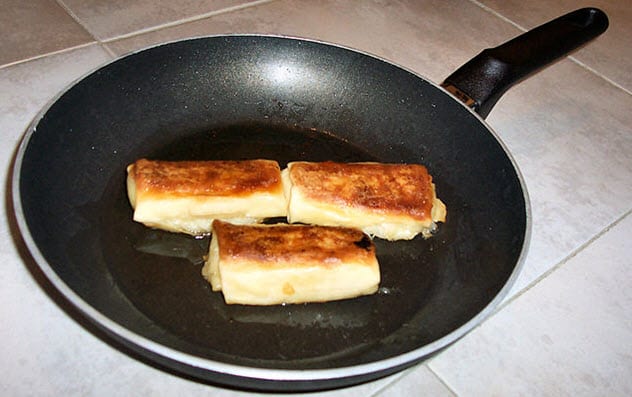
Where would we be without our nonstick cookware? Scraping off the eggs burned onto the bottom of the frying pan and trying to pry muffins out of baking trays, that’s where.
Teflon, or PTFE as it is known in the scientific world, would have to rank as one of the most useful kitchen inventions. However, polytetrafluoroethylene was actually invented by mistake in 1938 when DuPont scientist Roy Plunkett was developing a new CFC refrigerant.
Sawing open a gas canister used in his experiments, he discovered a reaction had occurred between the tetrafluoroethylene gas and the iron shell of the canister. The result was a waxy, repellent substance for which he initially saw no use. Further experiments on the slippery substance eventually saw it used in manufacturing and military equipment.
It wasn’t until 1954 that anyone thought to coat cookware with the substance to stop food from sticking to pots and pans. Frenchman Marc Gregoire was thinking of coating his fishing gear with Teflon to stop it from tangling when his wife suggested that nonstick cooking pans would be more useful.[1]
Most cookware used today is coated in a variety of Teflon.
9 Post-it Notes
 Post-it Notes would have to be one of the most useful items of stationery. The sticky little squares of paper can be found in any home or office. We use them to bookmark pages, stick handy reminder notes to the fridge or computer, and leave phone messages.
Post-it Notes would have to be one of the most useful items of stationery. The sticky little squares of paper can be found in any home or office. We use them to bookmark pages, stick handy reminder notes to the fridge or computer, and leave phone messages.
Yet this common stationery item was developed by mistake. Dr. Spencer Silver was a chemist working for 3M in 1968. His research into a super-strong glue seemed to have failed when instead he came up with a very weak adhesive that would only stick things together for a short time. What good was that to anyone?
It wasn’t until 1973 that the worth of this new adhesive was recognized. Arthur Fry, one of Dr. Silver’s colleagues, began using this temporary glue to bookmark the pages in his hymnal.
By 1980, 3M was producing small squares of paper lined with a coating of glue along one edge. Today, we use more than 50 billion of these handy little sticky notes each year.[2]
8 Safety Glass

Man has been using glass since the earliest civilizations. We use it in windows, cookware, jewelry, and decorative items. Blowing glass into decorative pieces is an ancient art form.
However, the main limitation of glass has always been the fact that it breaks into jagged, potentially dangerous pieces. So it is surprising to find that it was only in the last century that someone found a way to make glass safer.
Today, you will find safety glass in motor vehicles, windows, and cookware. It is tougher and less likely to break into jagged shards. Yet this stronger glass was discovered by accident rather than design.
French chemist Edouard Benedictus accidentally knocked a glass beaker onto the ground in 1903. He was surprised to find that it shattered but did not actually break as it contained cellulose nitrate which had left a film inside the glass.[3]
This plastic-coated glass was further developed during the early 1900s and was first used for the lenses in gas masks during World War I. Various forms of safety glass have been developed since Benedictus’s discovery, and today, safety glass is mandatory in cars, buildings, and some cookware.
7 Microwave Oven
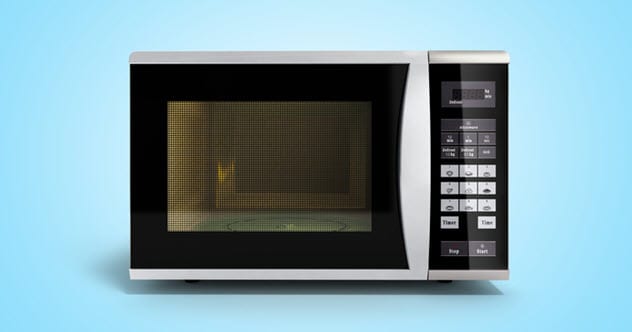
There are very few homes today without a microwave oven. The handy kitchen appliance certainly changed the way we cook. However, the microwave wasn’t an intentional invention. Percy Spencer, a radar engineer, was conducting experiments on a magnetron, a new vacuum tube in 1945.
During the experiment, Spencer noticed that a chocolate bar in his pocket had melted. He grabbed some popcorn and, to his surprise, found that the magnetron also made the popcorn “pop.” He had accidentally stumbled upon a new way of cooking.
Raytheon marketed the new microwave oven as a “RadaRange” in 1946. The initial ovens were costly and too bulky for most kitchens. They were the size of a modern refrigerator and took 20 minutes to warm up before you could actually cook anything in them.[4]
It wasn’t until the late 1960s that the smaller, cheaper versions found in most homes were developed.
6 Plastic
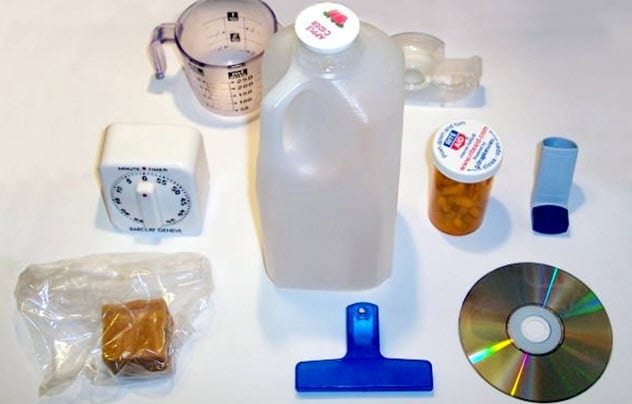
We can find plastic everywhere in most modern homes—from kitchenware to toys, furniture, and even packaging. Society is becoming increasingly aware of the environmental effects of this man-made substance, with worldwide attempts to minimize the use of plastic.
Ironically, plastic was developed to protect wildlife by reducing the need for ivory, tortoiseshell, horn, and other animal products as well as minimizing the industrial use of our natural resources.
In 1869, John Hyatt answered a New York firm’s call to find a substitute for ivory billiard balls. He found that combining cellulose (derived from cotton fiber) with camphor produced a substance which was flexible, strong, and moldable.
His newly discovered “celluloid” could be used in manufacturing instead of animal by-products, and it was even used in filmmaking. This new synthetic product would reduce the slaughter of animals for the use of their horns, tusks, and shells in manufacturing.
Leo Baekeland was researching an alternative electrical insulator to shellac in 1907. Expanding on Hyatt’s invention, he developed “Bakelite,” the first fully synthetic plastic which could also withstand extremely high temperatures without melting.[5]
Chemical companies soon began researching and developing new plastics for every use imaginable—from wartime equipment to furniture, cookware, and motor vehicles. The applications for plastic were endless.
Given the origins of plastics, it is ironic that they have become an environmental concern, with more people returning to naturally produced products.
5 Super Glue
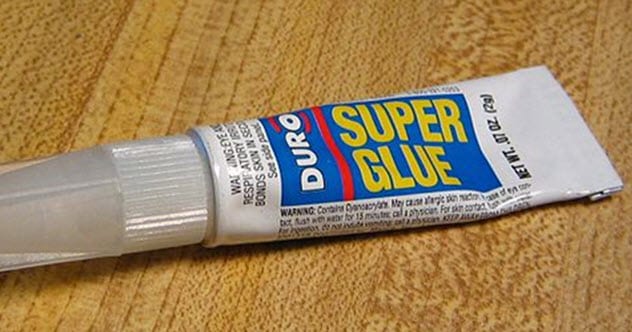
A researcher at Eastman Kodak found himself in a sticky mess when he was trying to invent a plastic lens for gunsights during World War II. Yet a handy little tube of the adhesive he had discovered can probably be found in most kitchen drawers around the world.
Harry Coover initially thought that his cyanoacrylate was useless as it stuck to absolutely everything it touched.[6]
In 1951, he and colleague Fred Joyner were looking for a temperature-resistant coating for jet cockpits. After spreading the cyanoacrylate between two lenses during scientific experiments, they were alarmed to find that they could not pull the lenses apart, which ruined expensive laboratory equipment.
It was then that they realized the potential for this glue, which almost instantly bonded two surfaces together. Super Glue was first marketed in the late 1950s and has become a popular remedy for many small household repairs today.
4 Stainless Steel

Stainless steel is something we take for granted in our modern lives. Cutlery, kitchen appliances, medical equipment, motor vehicles, and even skyscrapers all use the strong, noncorrosive metal.
French scientist Leon Gillet first made a steel alloy mix in 1904. However, he failed to notice the rustproof properties of this new metal compound.
In 1912, metallurgist Harry Brearley was experimenting to find a rustproof gun barrel. During his research, he had added chromium to molten metals. He eventually noticed that previously discarded metal samples were not rusting like other metals.
Based in Sheffield, the home of silver cutlery, Brearley soon began marketing his “rustless steel” to cutlery manufacturers in place of the traditional silver- or nickel-plated cutlery.
Manufacturing companies soon began researching and further developing this new grade of metal. The uses of stainless steel today go way beyond Brearley’s original stainless cutlery. Planes, trains, ships, and cars are made from it. You will find stainless steel in every kitchen and at most building sites. It is also used extensively in medical equipment.[7]
It is hard to imagine that this essential metal was initially thrown on a laboratory scrap heap.
3 Bubble Wrap

We probably take the protective packaging in most parcels for granted. Many people enjoy popping the small air-filled pockets in the Bubble Wrap in which their parcel contents were wrapped.
But did you know that Bubble Wrap was initially meant to be a textured wallpaper?
In 1957, scientists Alfred Fielding and Marc Chavannes put two shower curtains through a heat-shrinking machine in an attempt to develop a textured wallpaper. The result was a sheet of plastic covered in tiny air bubbles. Their efforts to use the product as a greenhouse insulation also proved to be a failure.[8]
In 1960, IBM was looking for a way to protect delicate computer components during transport. Fielding and Chavannes’s cushioned plastic was the perfect solution to their problem.
The usefulness of “Bubble Wrap” soon caught on and is the world’s most common packaging material today.
2 Cling Wrap
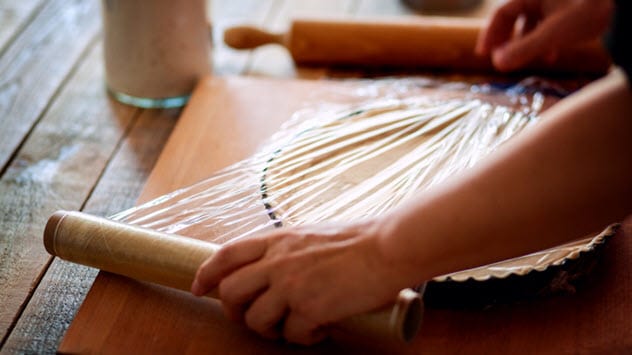
Every household has a tube of “cling wrap” in the kitchen drawer. The sticky plastic film wraps our sandwiches and covers our food to keep it fresh.
The sticky film, “Saran,” was discovered in 1933 in the Dow Chemical laboratories. Ralph Wiley was working in the lab developing dry cleaning products and discovered the substance when trying to clean used beakers.[9]
It was originally used as a protective spray in fighter jets and in motor vehicles. It was even used to line soldiers’ boots.
Saran Wrap was introduced into households as a food wrap in 1953. Concerns about the chemicals in the film being in contact with food led to further research and the development of “safer” plastic films. This effectively wrapped up the array of plastic food packaging we use every day.
1 Safety Pin
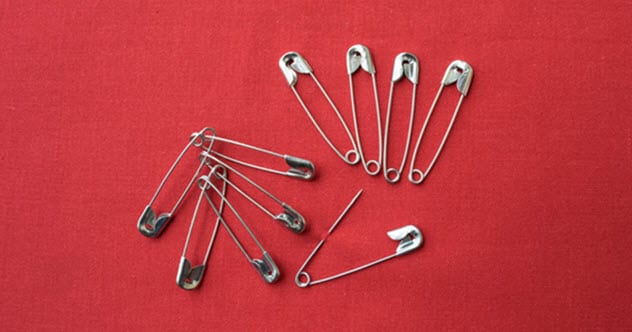
There are hundreds of uses for the humble safety pin. Clothing pins have been with us for thousands of years. However, the pointy ends were prone to give the wearer a nasty jab.
In 1849, New York mechanic Walter Hunt was sitting in his office fiddling with a piece of wire as he tried to come up with a way to pay a $15 debt.
He found that he had successfully twisted the wire into a useful object. He could see how the item in his hands could be used as a pin. The piece of wire now had a coiled spring at the bottom. Hunt added a clasp to the top, allowing the pointy end of the safety pin to be secured at the top and preventing users from being stabbed with the sharp end of the pin.[10]
A clever inventor, Hunt was unfortunately not a sharp business man. A few years earlier, he had invented an eye-pointed needle sewing machine. He failed to patent his invention as he feared that it would cause people to lose their jobs. His design was later copied and marketed by others.
While he did patent his safety pin invention, he sold the rights to the patent to the person to whom he owed the money.
Lesley Connor is a retired Australian newspaper editor who provides articles to online publications and her own travel blog.
Read about more fascinating outcomes of scientific accidents on 10 Fascinating Experiments That Happened By Accident and 10 Scientific Blunders Of Genius Minds.
